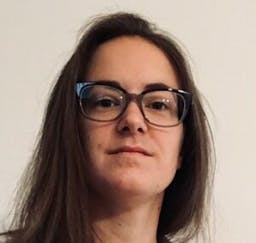Infinite Banking: An Intriguing, Yet Little-Known Strategy
By Maude Gauthier | Published on 09 Feb 2025

Coined by R. Nelson Nash and first popularized in the United States, infinite banking is gaining in popularity in Canada. In a nutshell, it’s a strategy that involves taking out whole life insurance, then borrowing money from your insurance for all kinds of projects.
Infinite Banking explained
A whole life insurance policy provides benefits for your heirs upon your death, but it also creates capital, with what’s known as a cash surrender value. It’s an asset you can use as collateral.
Let’s look at an example to clarify the concept. When you own a house that’s largely paid off, you can borrow money through a home equity line of credit (HELOC) or a reverse mortgage. In these cases, your real estate acts as collateral. With a life insurance policy loan, it’s the same mechanism, although your policy is immaterial and you can’t touch it like you can a house. When you take out a loan against your whole life insurance policy, you use the policy’s cash surrender value as collateral.
What makes Infinite Banking so interesting is that you can access your money without going to a bank, invest it in something else while maintaining your insurance coverage, and thus use it as leverage. All you have to do is apply for loan on your policy.
On the other hand, ask yourself whether an insurance company is really better than a bank. An integral part of selling this type of product is the idea of becoming your own bank and freeing yourself from financial institutions, but in reality, the insurance company will assume the role of the bank.
Why and how to borrow against life insurance?
There are a number of advantages to this method. First, there is often no tax to pay on the money you access this way. In Canada, an advance in excess of the adjusted cost basis (ACB) of the policy is taxable, so at some point you may pay taxes. In this case, you can take out a collateral loan at the bank (secured by your insurance policy) but at this point, you ain’t exactly “becoming your own bank” anymore.
Infinite Banking allows you to meet several needs simultaneously: while ensuring your children’s inheritance, you can use the money as an emergency fund, a retirement income supplement, leverage to launch a business or invest in real estate, and so on. The beauty of this concept is that you can use this loan to launch a project that will in turn generate value. Where do you start?
First, you purchase a policy after shopping around for life insurance, with an insurance company or broker. You usually can’t take out a policy through your employer, bank or investment firm. Once the contract is signed, you pay monthly premiums to the company in exchange for coverage. The insurer invests a portion of your premiums to make it grow, and then pays you dividends. These dividends can be used to further increase the value of your policy.
In addition to the death benefit paid to your beneficiaries, your policy can include an investment component. You can pay more than your premium, and the excess is applied to the cash surrender value. Income from this part of the policy is tax-deferred, so you can withdraw or borrow against it if you need to.
After a few years of payments, you will normally have accumulated a substantial sum and be able to borrow against this value. This is a long-term strategy, which means you’ll need to hold the policy for many years to take full advantage of it. But remember, borrowing means you’ll have a loan to pay back.
The disadvantages of Infinite Banking
The main drawback is the fees you’re likely to pay, plus interest (since it’s a loan). In the end, you’re borrowing your own money, with interest. This will drive up your premium payments later on, because you’ll have to pay back the interest. If you die without having repaid everything, the benefit paid to your heirs will be reduced.
The other major disadvantage is the cost of whole life insurance, which can run from $260 to $315 a month for a 35-year-old, for a $500,000 policy. The premiums for a the policy can therefore be very high compared to other types of insurance or investments. There’s no need to impose this long-term strategy on yourself if you’re struggling to make ends meet!
It will be helpful to consult a financial professional who understands Infinite Banking and can help you determine whether this is a good option for your particular situation. They can also help you compare this strategy with other investment or debt management options.
Insuring your child to take advantage of Infinite Banking without paying too much
At a (very) young age and in the absence of health problems, insuring a child costs only a few dozen dollars a month, or even less. In many cases, you pay premiums for a certain period of time, say 20 years, and then the policy is paid up, meaning you no longer need to pay. The child remains covered for life. As an adult, they can draw on the cash value to travel on a sabbatical, put a down payment on a house, buy a rental propery or finance their retirement.
